Guerrilla marketing has the potential to create a tremendous buzz at minimal cost giving brands excellent ROIs. The ‘LOOK AT ME!’ marketing is all about creativity, timing and execution. This blog explores several stand out examples of previously successful (and some not so successful!) campaigns from across the world. Some you may already know, some may be new to you, but all have one thing in common – they are show-stoppers!
Guerrilla MARKETING
Noun [ guh-ril-uh ] – Refers to ‘Guerrilla warfare’ – an organised tactical force.
Guerrilla marketing allows teams to use their imagination, creativity and ingenuity to overcome small budgets to promote a brand or product, specifically for targeted locations. Campaigns aim to generate local and national attention via word of mouth, press or by going viral. Timing is imperative, and the deliverables must be unexpected and surprise the target audience. Originality is vital when creating the Guerrilla concept. If it’s been done before or looks like something else, it is not Guerrilla!
You only have one shot at getting it right, so the execution is as important as the concept.
The point of Guerrilla marketing is to create a buzz. It is not to replace traditional marketing efforts; it is a one-off ‘look at me now’ idea that has the potential to grow your brand and ensure you are remembered for many years – if done right!
There are many examples of different types of Guerrilla marketing. It is well worth any marketeer doing a quick Google image search for inspirations. Often the campaigns overlap into multiple ‘types’ of Guerrilla marketing, but the overall goal is always the same… to get people talking!
Here are a few different types of Guerrilla marketing to consider:
Outdoor/indoor Guerrilla Marketing:
Adding to pre-existing environments, for example, adding artwork to structures or adding something to a statue.
McDonalds placed a coffee cup over a grill where steam rises to promote their premium coffee and special offers. Frontline installed an immense image of a dog on the floor, so from above, it looked like the people walking over the photo were fleas.


Experiential:
It can be any form of Guerrilla marketing but requires the audience to interact to discover its secrets.
It creates an experience for the audience that absorbs them into the brand.
The campaign below worked by using a poster that revealed different images depending on the angle of which it was viewed. The aim of this was to show not all abuse is visible to an adult, whilst offering a secret message to a child who feels unable to reach out. For those living in an abusive situation the campaign offered much needed help while cleverly leaving adults in the dark.
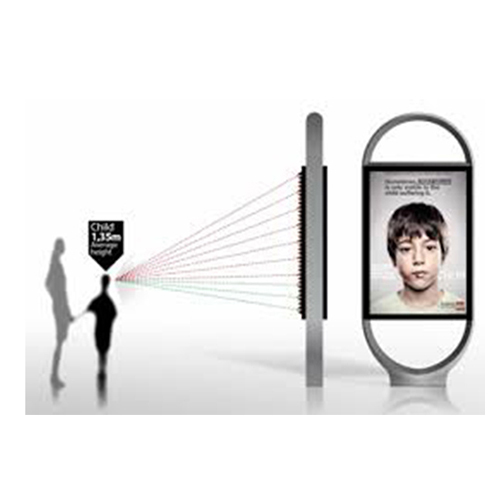

Ambient Marketing:
Marketing that interferes with the flow of the expected. For example, placing an advert somewhere unexpected or in an alternative way.
British Airways commissioned the art shown below so that it was viewable from flights landing during the 2012 Olympics to try and intimidate athletes from visiting countries. The other example shows a poster for BBC’s Dracula that would reveal a sinister shadow of Dracula only when the sun had gone down.



Projections:
By using hidden projectors, brands can project onto buildings to generate buzz.
Unfortunately for Morrisons, their projection of a giant baguette on the Angel of the North caused terrible press and left them heavily criticised for cultural vandalism. Morrisons (a business with strong northern roots) apologised but may have been left with a bitter taste in their mouth as a 1998 stunt using the Angel was more positively received. A 30ft Shearer shirt was draped over the Angel of the North by Newcastle United fans to celebrate a Wembley appearance.

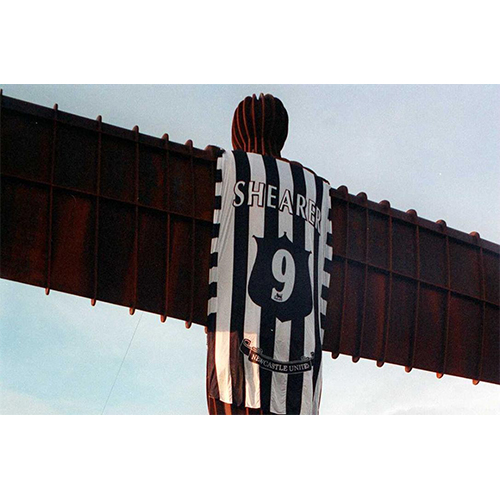
Graffiti:
Graffiti marketing uses public spaces such as streets and alleyways as a canvas. Although you would need to gain permission before carrying out the concept, if executed well, it can have a powerful impact on the public.
A simple but brilliant example of this type of Guerrilla marketing came from Jeep when they placed deliberately flawed parking spaces around cities to promote their four-wheel-drive capabilities. There has also been a spine-tingling Graffiti campaign from the film franchise ‘IT’ to promote the release of the recent remakes. Iconic red balloons appeared tied to drains with the straplines “it is closer than you think” across towns and cities, scaring anyone familiar with the movies.
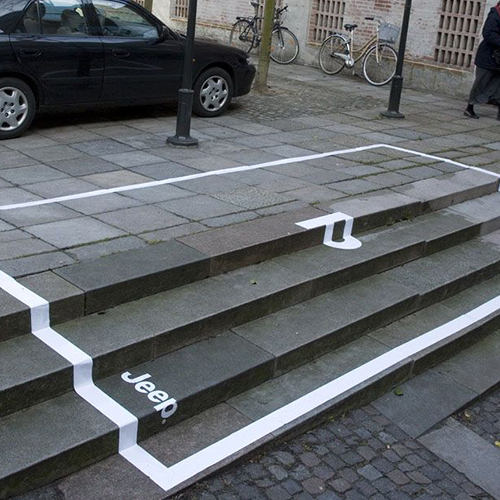

Ambush:
This type of Guerrilla marketing utilises an existing audience in settings such as a busy train station or football match. Event ambushing tends to be without permission to create a bold statement.
Carlsberg surprised travellers waiting for their luggage with free crates of beer! What cost them probably less than a few hundred pounds soon went viral and gained national press coverage. If Carlsberg did Air Travel! If Carlsberg did Guerrilla marketing…
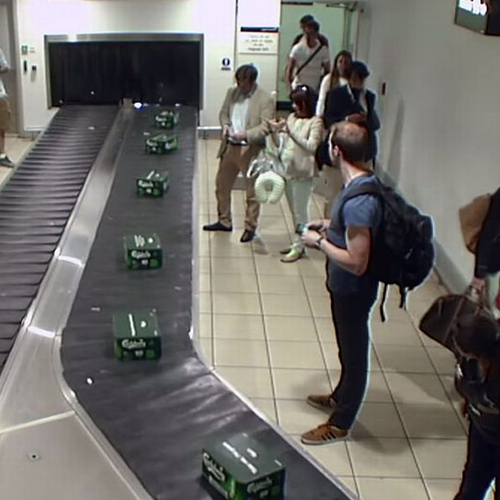
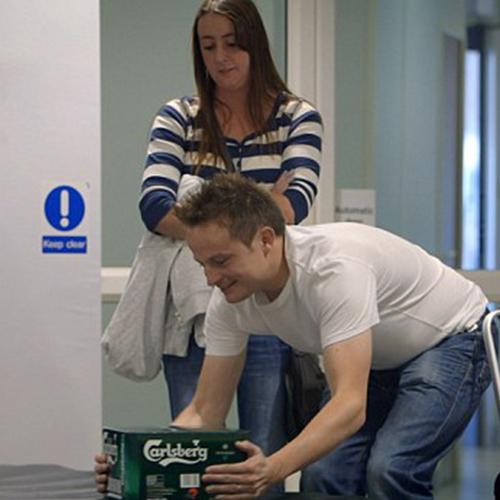
Undercover:
Disguising actors as peers amongst a target audience to promote a product – this is not influencer marketing.
An example was Sony’s campaign in 2002, where actors were hired to ask strangers to take a photo of them and would talk up the phone and its features during the interaction. Often seen as misleading, undercover marketing may not be suitable for some brands. However, if done in the right way, it could be a viable option for some.
Pros of Guerrilla Marketing:
- This form of marketing can be affordable – with the right creativity and execution, a successful Guerrilla marketing campaign can be very cheap.
- Word of mouth is one of the most powerful ways to sell a product which is the point of Guerrilla marketing.
- Guerrilla marketing has the potential to make your brand go viral and gain local, national and worldwide press attention – at no cost!
- There are no rules – you can do whatever you want – if you are brave enough!
Cons of Guerrilla Marketing:
- There is a fine line between mystery that intrigues or mystery that confuses. Many campaigns can fall flat if the communication is not clear enough.
- Permissions can be hard to get, and if you don’t get them, there can be severe consequences. In 2007 LED circuit boards were installed around Boston to promote a new animated series but were mistaken for explosive devices. However, even though bomb squads had to remove the devices and police made arrests, the campaign gained colossal press coverage, ultimately promoting the new series.
- Obstacles like weather, events, locations (and many more) can cause a minefield of issues.
As an agency, we are yet to meet a client brave enough to enter the mysterious and creative world of Guerrilla marketing, but it’s something we are desperate to do! We are a team of super creatives brimming with ideas just waiting for that client to come along and go on this exciting journey with us!

